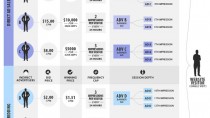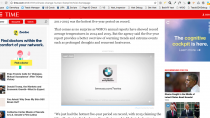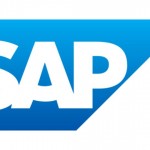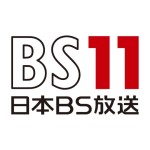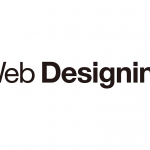Pubmatic、2014年は自動広告取引によって10億ドルが費やされると予測
Google, AppNexus, and PubMatic are all talking up the convergence of guaranteed and non-guaranteed media. The first solutions designed to address this convergence were private exchanges, embraced by many sellers but fewer on the buy side. Now the companies are moving forward on the next wave of features.
Among the favored approaches is so-called “holistic yield management” or “unified optimization” – essentially a way to let ad network and exchange buys compete with direct sales. This approach has advocates and opponents. For the latter, see Esco Strong’s recent piece, ” Why Publishers Should Be Wary of Optimizing Their Direct and RTB Demand Sources Together.” For the former, see PubMatic’s new Deal Management functionality.
According to PubMatic CEO Rajeev Goel, the new workflow lets publishers more easily share inventory packages and price points with prospective advertisers, and traffic the winning ad with the advertiser’s DSP of choice. He pegs the size of the programmatic reserved opportunity in the hundreds of millions this year — and at more than $1 billion in 2014.
We spoke with Goel about a new workflow and UI for the product, the size of the market, and other topics.
How does PubMatic view the “programmatic reserved” opportunity?
RAJEEV GOEL: We saw the opportunity about a year and a half ago, specifically that 10% of the bids [on our platform] are $10 CPM and higher. When you consider that, the old model doesn’t really make sense, because I may have direct-sold a $5 or $7 CPM, and why is that winning out over the $10 bid? Particularly when you factor in the cost of sales and service of the non-RTB approach, then you will get additional profitability on that $10 bid versus my $5 direct-sold campaign and now you’ve got even more compelling economics.
That’s where we embarked a year-and-a-half ago and we now have a product in the market called Unified Optimization. It sits on top of DFP or Atlas or AdTech, whatever the case is. It unifies all the data and it unifies the ad serving decision so a publisher can now make a real-time decision… We’re beta testing it right now with two of the top five broadcast networks. I can’t say who they are but I think that’s a sign of the opportunity to the market.
And what is the size of the opportunity?
Guaranteed programmatic and all of its incarnations is probably a sound $100 million business this year. By Q4 though, we could be looking at rolling into next year where it’s spiking upward of one billion dollars. I think you’re starting to see the digital leaders get put in place that are for this agenda. You see somebody like Jeremy Steinberg moving over to the Weather Channel (AdExchanger story). I think that’s a sign of what’s to come.
How do you bring these UI enhancements to the demand side?
There are really two ways to do this. In Q4, we launched a portal for the demand ecosystem. Buyers can see what campaigns are running, they can look at inventory availability, they can tweak campaign settings. They can access all of the packages and the deals that publishers are making available. Then they can buy it, negotiate it, and then spin it live with the DSP. So, that’s one channel.
The other channel, and I think this is the channel that will take time to get traction, is you have an API where any buyer can essentially integrate all of those publisher packages, all of the publisher inventory into their own buy-side solutions. They can use the API to say, “Okay, what packages are new” “What packages exist?” “What are the price points?” and they can then integrate that into any media buying and planning tools they already have.
You can start to see now the promise of programmatic premium or whatever you want to call it. These are fundamental changes to the workflow and the processes of how media is bought and sold. Nothing is going to get done overnight but you can see that the building blocks are in place.
AppNexus clearly has plans around guaranteed programmatic (AdExchanger story). How competitive are you with them?
The other way to attack this is to say, “Okay, let’s offer guaranteed delivery within the private marketplace.” That, to me, is a much more incremental approach to attacking this and we are offering that as well. That’s where I see other players going, whether it be AppNexus or somebody else. That’s where I see them playing in the programmatic guaranteed arena.
AppNexus for us is both partner and competition. They’ve done really well obviously and their core customer is the ad networks. That’s not who we look at as a customer. It’s just that we’re built differently and go after different opportunities. I think we’re going to continue to partner in many areas and compete in some, but I think we’re fundamentally focused around a different opportunity.
What are your priorities around mobile?
We started developing mobile about two years ago. We did “acqui-hires” a little over a year ago and then I brought in Bob Walczack, the CEO from RingLeader Digital, about eight months ago to run our mobile business. We’ve now got over 35 people in the company 110% focused on mobile. Twenty of them are engineers.
The world is going to be obviously a multi-screen environment where you can interact with your favorite content and websites across multiple screens. We saw that happening within our own publishers. They would say, 5% of my audience is mobile, now it’s 10%, now it’s 25%. And very clearly those customers are going to need a multi-channel solution.
The most recent technology released in mobile was around a new SDK that ties into the biggest ad networks, Millennial and AdMob – and also rich-media compliance for the new MRAID 2.0 SDK. That’s giving us a huge advantage in terms of monetization. We’re delivering a 20 to 30% premium in eCPMs in mobile over the desktop, and that’s not the normal in the market for sure.
What threat does impression fraud pose to the industry, and what is the responsibility of SSPs to fight it?
The number one responsibility is transparency. What is the URL? Who is the publisher? What type of inventory is this? We want to be very, very explicit about it in terms of how it’s described and made available. There’s no opportunity for gray area or confusion, that the seller knows what it is, that hte DSP knows what it is, and the buyer knows very clearly what it is.
Number two, we want to make sure that there’s a healthy, robust, ecosystem and we’re contributing towards that. We don’t want to be in a position where putting short-term gain over long-term [benefit] to the ecosystem. When these things arise, like [ad injection perpetrating company name redacted], we’ll have a very honest and clear conversation with the publishers who are affected to say “Hey, is this something that you’re aware of and you’re comfortable with? Have you got a relationship with this potential offender? If so, and you’re comfortable with it and we’ve made it 100% transparent, then that’s what we’re considering letting into the ecosystem.”
If somebody has this browser plugin sitting on top of your website, the questions are (a) Are you aware, and (b) If you’re aware, are you comfortable with it? Sometimes the answer is yes and sometimes the answer is “No, we don’t like this. We don’t work with those types publishers in the market.” [In that case], we just go to them and say, “We’re not in position to take on this type inventory. If you go and work with Fox and you work with New York Times or whoever and get to a point where they’re comfortable with co-existence with you, then great, let’s have a conversation.”
We’re putting a ton of energy behind URL transparency. For us, it makes good business sense. I’m not going to tell you we’re the Mother Theresa of online advertising, we’ve got a business to run as well. But it makes really good business sense. Every publisher that comes into our platform, we implement technical mechanisms to make sure that the URL is transparent.
So PubMatic responds to complaints. What about website pre-approval?
Any publisher we work with, they have to give us a list of sites that we pre-approve, and that’s been a long-standing policy. We’re working with premium demand side players, whether it’s Ad.com, ValueClick, those types of guys. The last thing we want is one publisher spoiling that relationship because we didn’t take the time to know the inventory. That’s just not something that we would allow to happen.
form:
http://www.adexchanger.com/platforms/pubmatic-says-programmatic-reserved-will-hit-1-billion-next-year/

